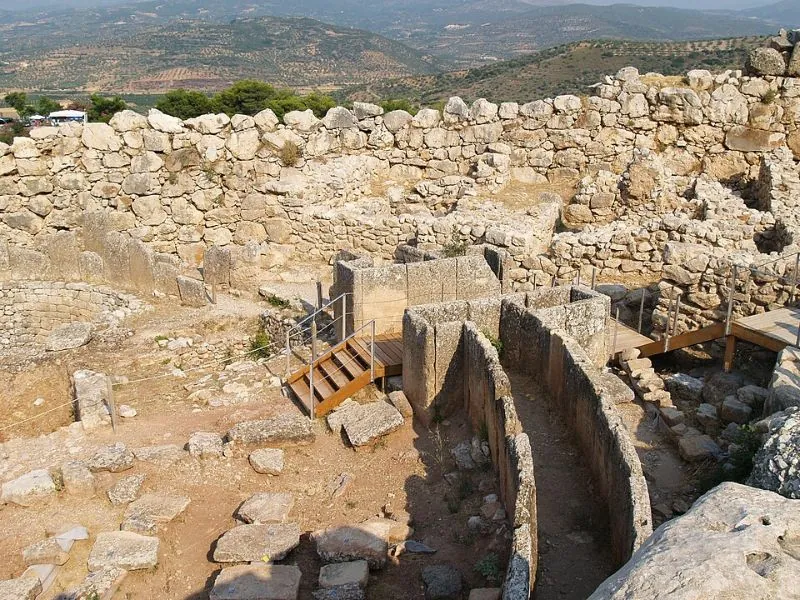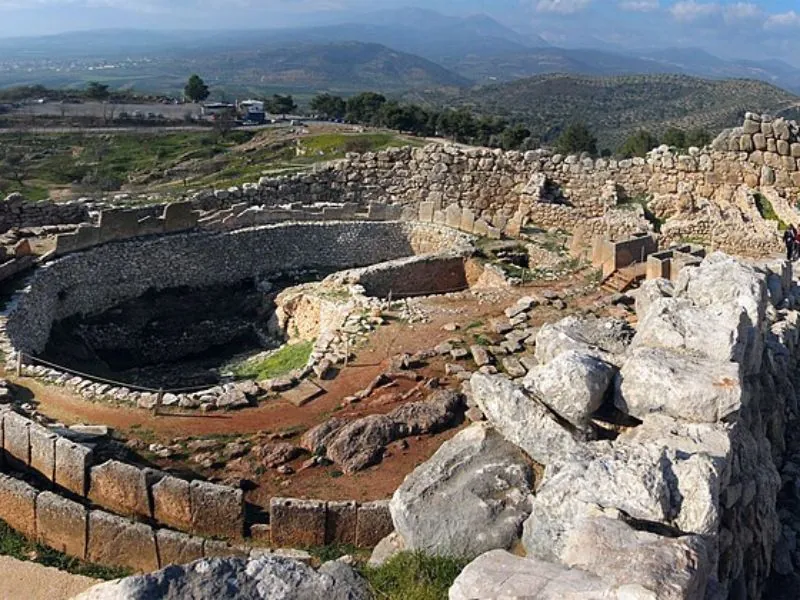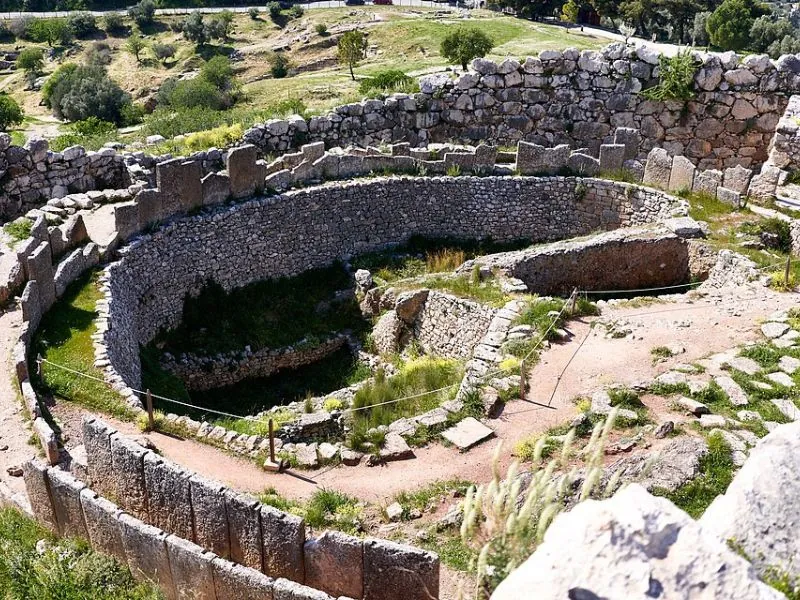
Just a few paces southeast of the Lion Gate, a low stone ring 27.5 m across guards six deep shaft graves that rewrote Bronze-Age history.
Known today as Grave Circle A in Mycenae, this 16th-century BC cemetery yielded more than 15 kg of gold and the famous “Mask of Agamemnon,” transforming a stony knob of Argolid into the most talked-about archaeological site in Greece.

In 1876 Heinrich Schliemann—supervised by Greek archaeologist Panagiotis Stamatakis—followed Pausanias’ clues and opened the circle’s first five shafts. The sixth grave emerged only the next season, revealing nineteen individuals: eight men, nine women and two children.
Later carbon-14 studies confirmed that Grave Circle A in Mycenae was sealed around 1500 BC—three centuries before any historical Agamemnon could have lived—yet the cache perfectly illustrated Homer’s epithet “rich in gold.”
Originally outside the citadel walls, the cemetery sat on a slight terrace with each grave marked by a mound and sculpted stele, several showing chariot scenes.
During the 13th-century wall expansion the Mycenaeans enveloped the circle inside the acropolis and built a double-ring peribolos, converting the necropolis into a sacred precinct visible to every visitor who passed the new Lion Gate.
The message was clear: current kings claimed authority by venerating—perhaps even appropriating—the heroic ancestors beneath their feet.

Shaft dimensions range up to 6.5 × 4.1 m and four metres deep. Skeletal analysis shows that the adult males averaged nearly 1.75 m in height and had healed weapon wounds—elite warriors rather than frail priest-kings.
Female remains bear traces of malachite eye-paint and pierced-ear jewellery, evidence of status mirroring that of their spouses. Isotope tests on tooth enamel reveal diets rich in animal protein and imported wine, distinguishing these people sharply from contemporary Middle-Helladic villagers.
Such objects were not mere grave goods; they were political statements advertising a dynasty whose maritime trade links stretched from Crete to Egypt and beyond.
Schliemann’s excitement led him to christen his best-preserved mask the “Death Mask of Agamemnon.” Modern dating, however, places the burial circa 1550 BC.
Rather than Homer’s king, the interred may belong to the earlier Perseid line—ancestors whom later rulers mythologised to buttress their own legitimacy. The episode remains a textbook lesson in how archaeological evidence can both inspire and correct legend.

Cut marks on long bones suggest defleshing or secondary manipulation, while burned animal offerings indicate feast-like funerary rites. Libation channels carved into grave covers would have allowed descendants to pour wine directly onto the bodies.
Combined with the lavish goods, these practices paint a picture of ancestor veneration aimed at securing divine favour for the living community.
Comparing Grave Circle A in Mycenae with contemporary Grave Circle B (outside the walls) shows a steep rise in wealth: ten-times more gold, far richer weapon sets, and a leap in imported luxury.
The shift parallels a broader Aegean trend toward centralised monarchy, with Mycenae’s kings controlling long-distance exchange routes and displaying that power in mortuary splendour. When tholos (“beehive”) tombs superseded shaft graves a century later, the trajectory toward even grander statements of authority was set.
More than a treasure trove, Grave Circle A in Mycenae is a narrative carved in stone and hammered in gold: a story of warrior-kings, long-distance trade and the birth of royal ideology in mainland Greece.
Encased within the later fortifications, the cemetery reminds every visitor that Mycenae’s power grew from both its living rulers and its revered dead—an inspiring convergence of myth, archaeology and human drama that continues to captivate travellers today.